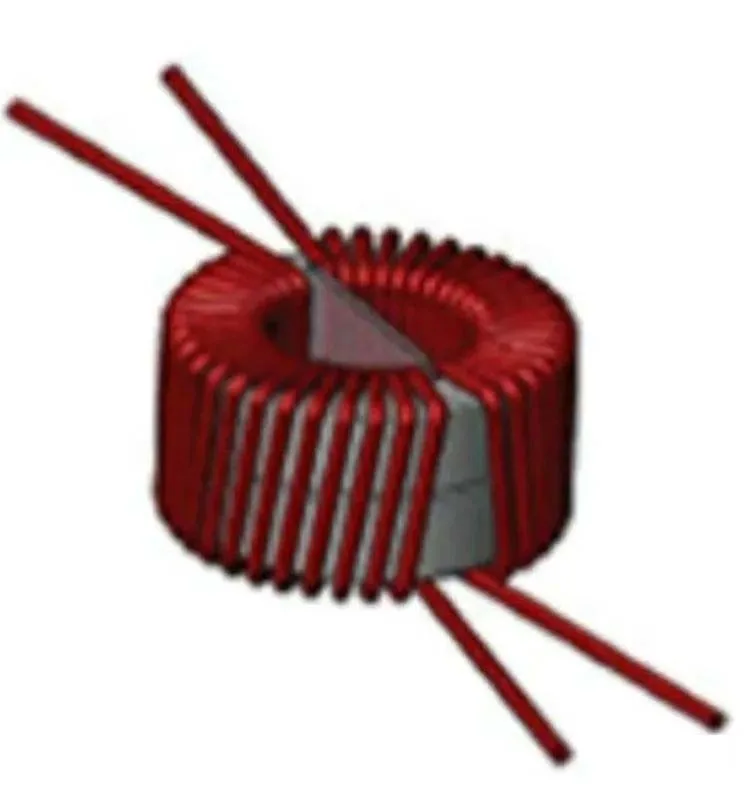Inductor:
Reactors and inductors are two closely related but entirely different concepts.
Although reactors can objectively be referred to as inductors, their applications and operating principles are entirely distinct.
An inductor is an electronic component that converts electrical energy into magnetic energy and stores it. The structure of an inductor is similar to that of a transformer, but it typically has only one winding. An inductor possesses a certain amount of inductance, which is utilized to resist changes in electric current. When current flows through the winding, a magnetic field is generated around it. Within this electromagnetic field, an induced electromotive force (EMF) is produced—referred to as self-induced EMF. This phenomenon is known as electromagnetic induction.
To enhance electromagnetic induction, people commonly wind insulated wires into coils with a specific number of turns. This coil is referred to as an inductor coil, or simply an inductor. The characteristics of inductance are also utilized in the production of choke coils, transformers, and relays. When an inductor is in a state where no current is flowing through it, it attempts to stop the flow of current when the circuit is closed. Conversely, if the inductor is in a state where no current is flowing, it strives to maintain a constant current when the circuit is opened. Inductors are also known as choke coils or dynamic reactances. The two main functions of inductors are filtering and storing energy.

Reactors are used to maintain current and stabilize the voltage of an electrical system. The reactors employed in power grids are essentially hollow coils without magnetic core material. They can be assembled in various configurations, including vertical, horizontal, and interleaved forms, depending on the requirements. During short circuits in electrical systems, significant short-circuit currents can occur. Without proper limitation, it becomes challenging to maintain the dynamic and thermal stability of electrical equipment. Therefore, to meet the breaking capacity requirements of some isolation switches, a reactor is often connected in series with the outgoing circuit breaker. This addition increases the short-circuit impedance, thereby restricting the short-circuit current.
Conductors carrying current exhibit general inductance. However, long and straight conductors have low inductance when energized, resulting in a relatively weak magnetic field. Therefore, practical reactors are constructed by winding conductors into a helical shape, forming an air-core reactor. At times, to increase the inductance of the helical coil, an iron core may be inserted into the coil, referred to as an iron-core reactor. In the realm of AC power sources, in addition to the resistive impedance of the current flow, the flow of current is also impeded by capacitance and inductance. This phenomenon is known as reactive resistance, signifying the resistance to the flow of current. Capacitive and inductive resistances are respectively termed capacitive reactance and inductive reactance.
An inductor is also a component capable of converting electrical energy into magnetic energy and storing it. The two primary functions of an inductor are filtering (allowing DC, blocking AC) and energy storage. Inductors have the characteristic of allowing the smooth passage of direct current while impeding the flow of alternating current. The resistance of the coil to a DC signal passing through is primarily the resistance of the wire itself, resulting in a minimal voltage drop. However, when an AC signal passes through the coil, self-induced electromotive force (EMF) is generated at the ends of the coil. The direction of this self-induced EMF is opposite to that of the applied voltage, hindering the passage of AC. Therefore, the characteristics of an inductor include the passage of DC and the impedance of AC, with higher frequencies leading to increased coil impedance. Inductors often work in conjunction with capacitors in circuits, forming LC filters, LC oscillators, and similar configurations
Wires wound into a helical coil form what is known as an air-core reactor. Sometimes, to enhance the inductance of this coil, an iron core is inserted into it, resulting in an iron-core reactor. Reactors can be categorized into inductive reactance (inductors) and capacitive reactance (capacitors), with the more scientifically accurate term being reactance devices. However, due to historical precedence where inductors were initially referred to as reactance devices, the term “reactor” is now commonly used to specifically denote inductors. Capacitors are often referred to as capacitive reactance devices.


